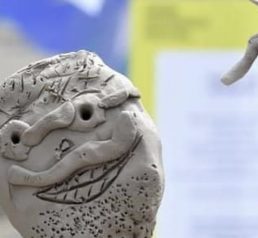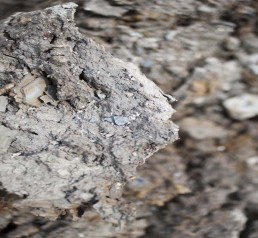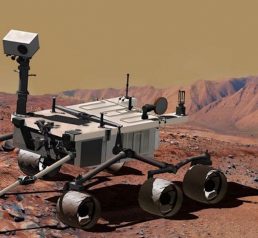Perseverance: a new NASA rover continues to follow Martian clay
Greetings from Clayground! We have been quiet but busy during lockdown, gearing up for activities later this year and early next. We’ll be sending out more detailed updates in a few weeks. Meanwhile we’re sending news of extraterrestrial clay.
For many years, Clay Geochemistry Researcher Javier Cuadros, has kindly kept Clayground in touch with research into clay on Mars via data sent back to Earth from NASA. Perseverance rover is on a mission to seek signs of ancient life and collect rock and soil samples for possible return to Earth. Javier describes it in more detail.
“Perseverance, the new NASA rover, went off on Thursday 30 July at 11:50 am BST (7:50 am at Cape Canaveral).

Perseverance is very similar to Curiosity, the rover operating on Mars for eight years now, but not its twin. Among the differences, Perseverance is equipped with the first flying device ever to fly in another planet: the mini-helicopter, Ingenuity, that will help guide Perseverance in its movements and scientific mission.
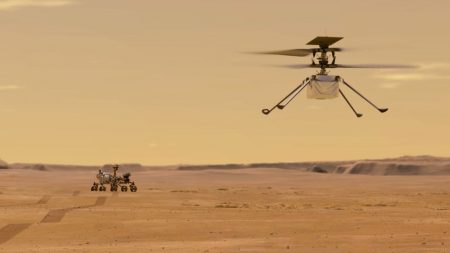
Perseverance is set to land on 18 February 2021 in Jezero Crater, a very ancient meteorite impact crater that was flooded by water channels more than 3.5 billion years ago and developed a large interior delta still surviving. An important part of the Perseverance mission is looking for traces of ancient life. By going there, NASA continues “following the clay” in its quest for environments that may have supported life. The delta within Jezero Crater contains abundant clay. An ancient lake is a good place to look for ancient life but there is more to it. A delta is a rubbish bin where detritus transported by rivers from distant places is deposited. Most of this material is fine-grained, like clay. Perseverance will be looking at clay and other fine sediment transported from distant places and accumulated in the crater. It is like exploring a much larger area without having to go all around it. The disadvantage is that the sediment from different points will be all mixed up. Geologists, however, have a long experience with deciphering complex sedimentary materials and are not frightened by this challenge.
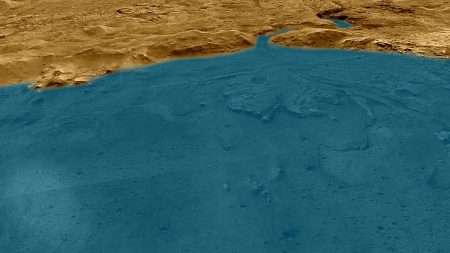
One more new feature of Perseverance is that it will collect and encapsule the first Martian samples that will be returned to Earth. This is the first step of a several-mission project. Perseverance will drill the rock or sediment, place core samples in small cylinders, seal and pack them in wait of future missions that will put them on board a small rocket that will eventually return them to Earth. Most likely, there will be a lot of clay in those samples. Investigation on the spot will decide which samples will be returned. Scientists on Earth will be assessing the data sent by Perseverance and choosing the most interesting drilling cores to be brought back.
Clay remains one of the most exciting extraterrestrial materials because it can only form by action of water on rock, it retains water and is a very good preserver of organic matter. This means that where there is clay there was water, or rather most likely there still is adsorbed tightly to the clay, and that some organic remains of an extinct life (3.5 billion years ago!) may still be preserved attached to clay particles and be recognized as decay products of living organisms. What makes clay a superb medium for artistic expression makes it also a fascinating scientific target. Fingers crossed that Perseverance will find its way safely to the surface of Jezero Crater.”
-
Pandemic clay action!
18th Aug 21
-
The Volcano and the Microbes: interaction between geology and biology
4th Jun 21
-
Perseverance: a new NASA rover continues to follow Martian clay
2nd Aug 20
-
Research into clay provides clues as to how much water there was on Mars
18th Sep 19
-
22 Hands: British Ceramics Biennial Commission
12th Aug 19
-
Clayground Summer Events
24th Jun 19
-
Colourful Clays on Mars
20th Feb 19
Thames foreshore fragments and visual references
4th Dec 12
How is clay formed? Is it inorganic or organic?
10th Sep 12
CLAY FROM AROUND THE WORLD
3rd Aug 11
Clay Cargo 2014 Collection: the Thames Foreshore
15th Dec 14
Clues to life on Mars likely to be found in clays, Javier Cuadros
5th Aug 16
Clay Cargo 2013-2015
15th Jun 15
Sessions on the Clay Cargo boat, hosted by Fordham Gallery
9th Mar 15
Civic Spaces, Exhibitions
Museums and Galleries, Regeneration
Maker spaces, Rural Sites
Archaeology
Youth and Adult Community Groups, Professionals
Art Groups, Families, Students
Collaborations, Archaeology Sheets
Commissions, Thinking Hands? Research
Knowledge Exchange

